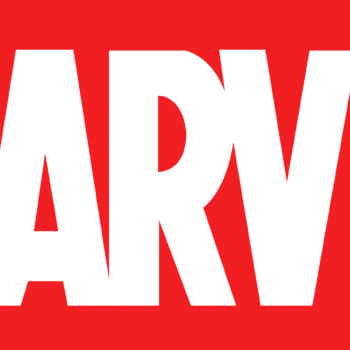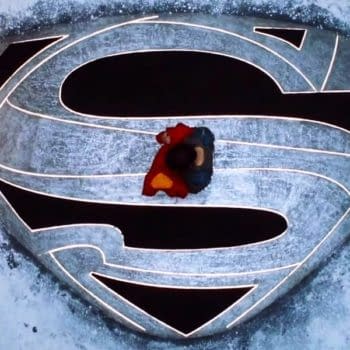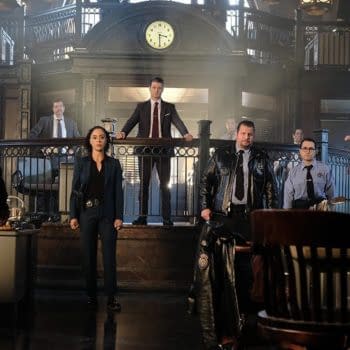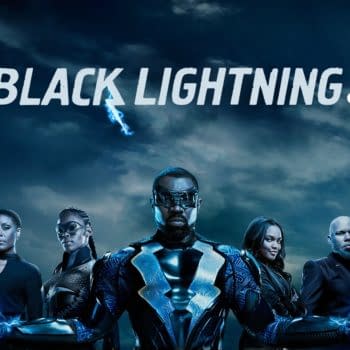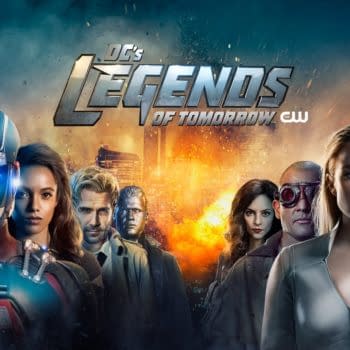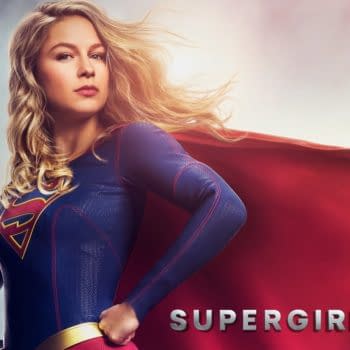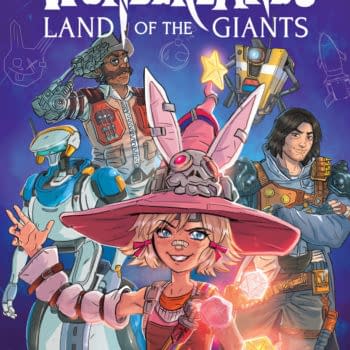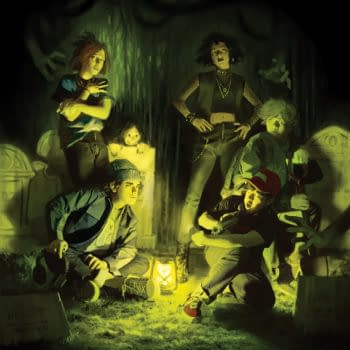Posted in: Comics | Tagged: Ande Parks, Comics, dynamite, entertainment, Esteve Polls, Francisco Francavilla, Seduction of the Innocent
Ande Parks Talks Seduction Of The Innocent
Corinna S. Bechko, writer of Vampirella/Aliens #5, talks with writer Ande Parks about Seduction of the Innocent #2, both in stores now. Cover art by Francisco Francavilla.

ANDE PARKS: I used the city in part because of the atmosphere and connection to things you mentioned (The Maltese Falcon is a big favorite of mine), but also because I have a personal connection to the city. My father was born there. He was orphaned there in his teens. Later, he showed me around the city, so it became a part of my childhood too.
So, it's a relatively under-used setting, one that means a lot to me, and it just has these fabulous places: the Tea Garden, Chinatown, the Wharf, etc. We try to show all of them off in their period glory.
CSB: I think comics provide a wonderful medium for telling stories set in the past since they can immediately plunge the reader into their world through the art. That said, the amount of research involved can be daunting, especially when you're on deadline. How do you and artist Esteve Polls split up this duty? Am I wrong in assuming that you provide pointers on appropriate hats?
AP: I try to give cues whenever they occur to me. We have a scene in Chinatown in our third issue, for example, and I mentioned that Esteve could find some period-appropriate reference in the Orson Welles movie Lady From Shanghai. I gave him reference for the Tea Garden in the second issue, and so on. I don't want to overwhelm the artist with data, but I want to make their job as easy as possible.
It's nice getting to work with the same collaborator over a period of years. Even though Esteve and I speak different languages, we have developed a way of communicating through the scripts in a way that gets us a finished product we're both happy with. He is really strong at environments … at making the world of the comic convincing. I just drop some cues, and he runs with it.
The word "fedora" is definitely mentioned often in these scripts. I don't think I gave Esteve specific reference, but he nailed the proportions of hats for the era.
CSB: The name of your book conjures up a dark time in the history of comics. Are you counting on your readers responding to that context?
AP: Once upon a time, the series had a significant tie to the Wertham hearings. We had to lose that aspect, and the title became more of a theme for the book. We are definitely conjuring the vibe of those days with our covers. I asked Franchesco to pay homage to Johnny Craig EC covers, and he's doing that brilliantly. Overall, though, it's more of a feeling than a specific subtext.
CSB: At the end of issue #1 there was a big reveal that put everything that went before it into a different light. At the end of issue #2 there is a twist of a different sort. When plotting out the arc of a story like this do you know what the cliffhangers will be ahead of time, or do you let them emerge as the script takes shape?
AP: I plan that stuff pretty carefully when I write the initial outline. Then, as I go, it all seems to drift a bit. Usually I can keep the big reveals, but not always. I always hate it when writers say pompous crap like "I just let the characters tell me what the story is!" but there is some truth there. In this case, the element of Jennings having "visions" came to me as I was writing, and that afforded me the opportunity to play with reality vs. illusion at the end of the second issue. I try to be open to stuff like that. I never want to be so rigid or protective of my outline that I miss interesting opportunities.
CSB: Finally, as a lover of film noir, it seems to me that there are some noir tones to this story. Is that correct? And either way, can you share any of your inspirations?
AP: Yeah … I definitely think about noir stories I love as I write this book. I already mentioned Lady From Shanghai. The Third Man is maybe my favorite movie, and I think it qualifies as noir, but I don't know that much of that film made its way into our story. Another Welles, Touch of Evil, is definitely a big influence. As for specific influences on out comic, I think the dialogue was helped a lot by that whole era of film-making … the era of Mitchum and Bogart, etc.



